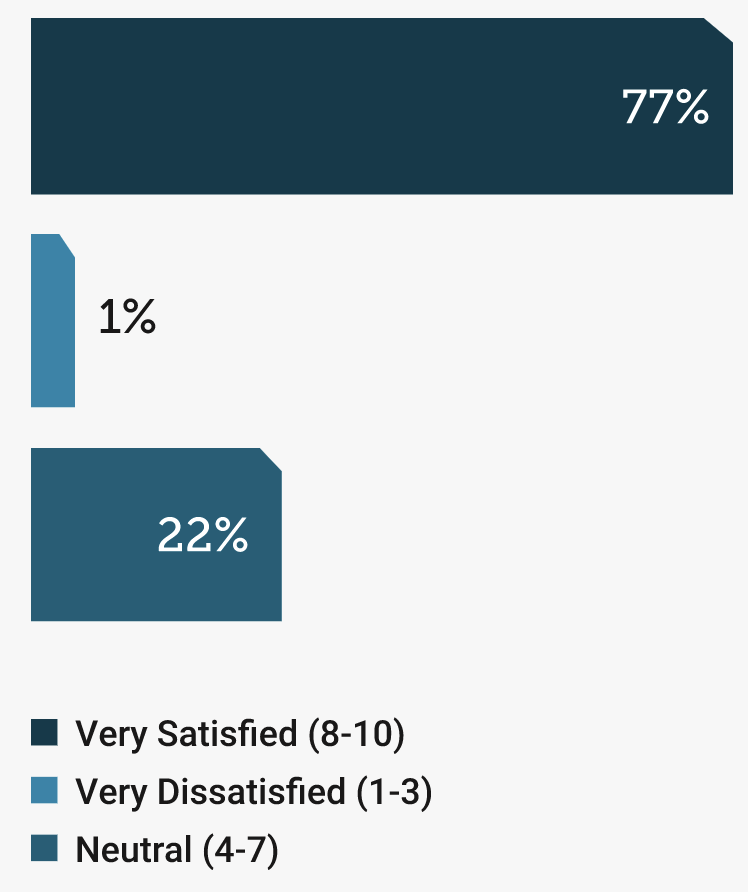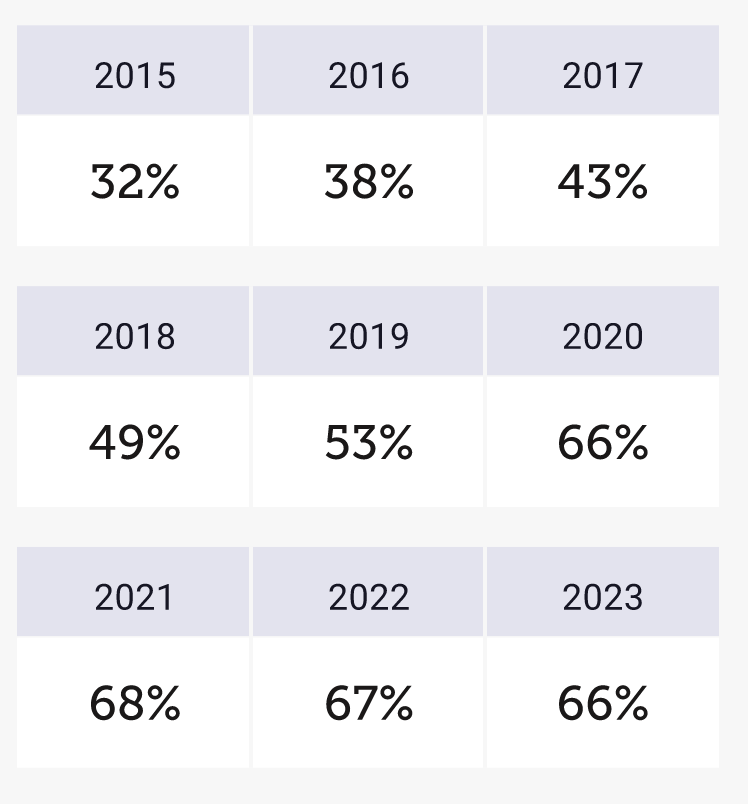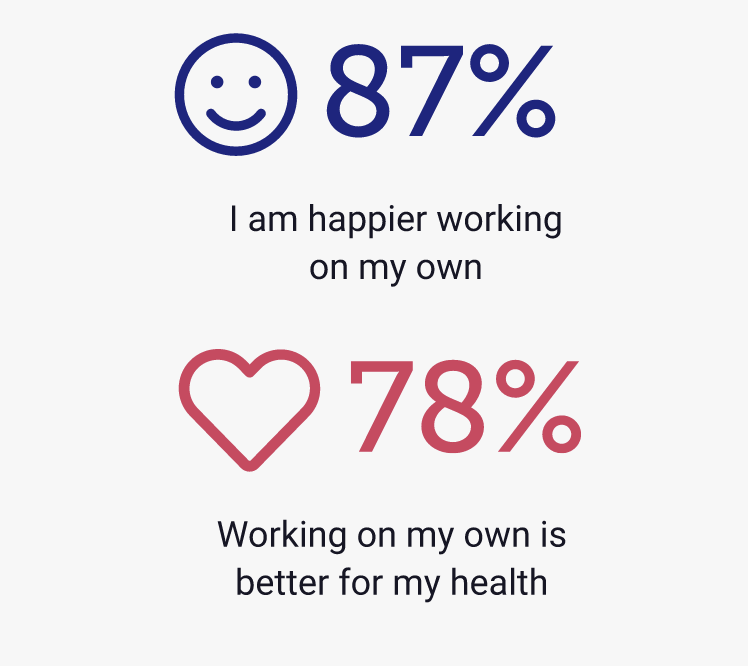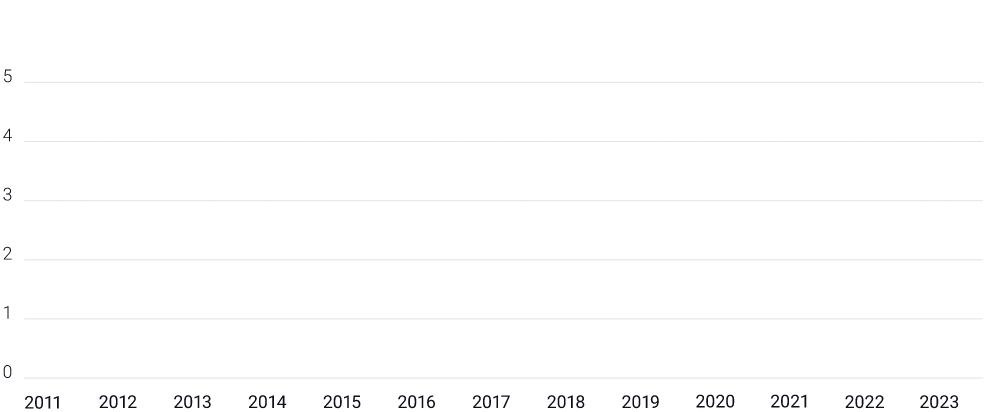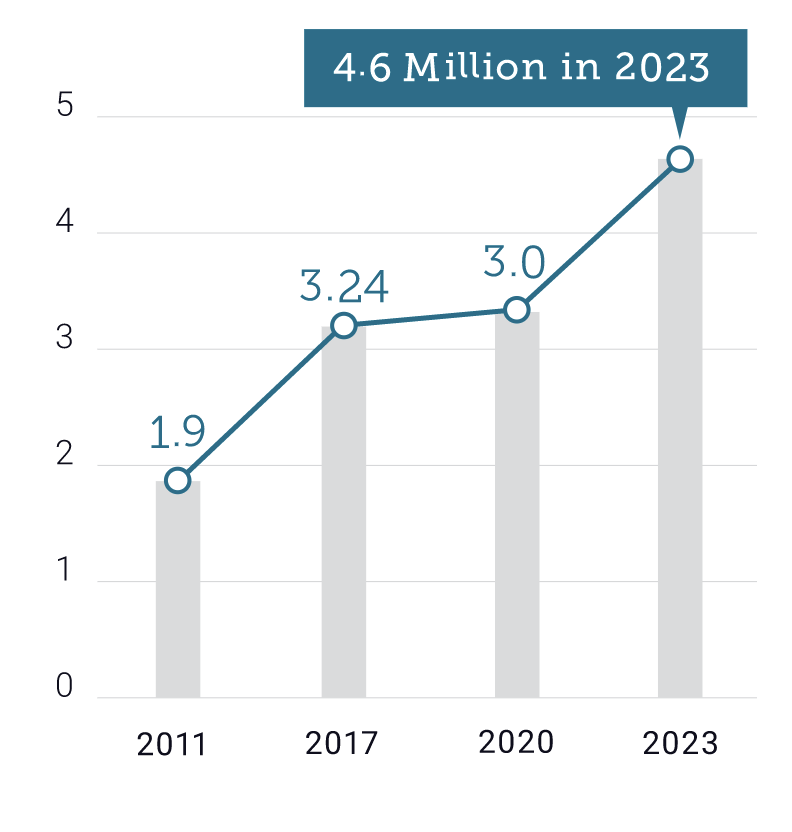Stronger
Together
State of Independence
in America 2023
State of Independence
in America 2023
Introduction: In 2023, the state of the independent worker is stronger.
In 2023, these factors worked in concert to support both an increase in supply and an increase in demand for independent workers. These developments are helping make independent work more prevalent, secure, and lucrative.
And in turn, the optimism, resilience, and skills of independent workers encourages the further growth of this vital sector which now encompasses some 72.1 million Americans, about 45% of the workforce.
Independents in America (by Type of Worker)
Independents in America
(by Type of Worker)
(Data in millions unless otherwise noted)
Occasional Independent
Full-Time Independent
Part-Time Independent
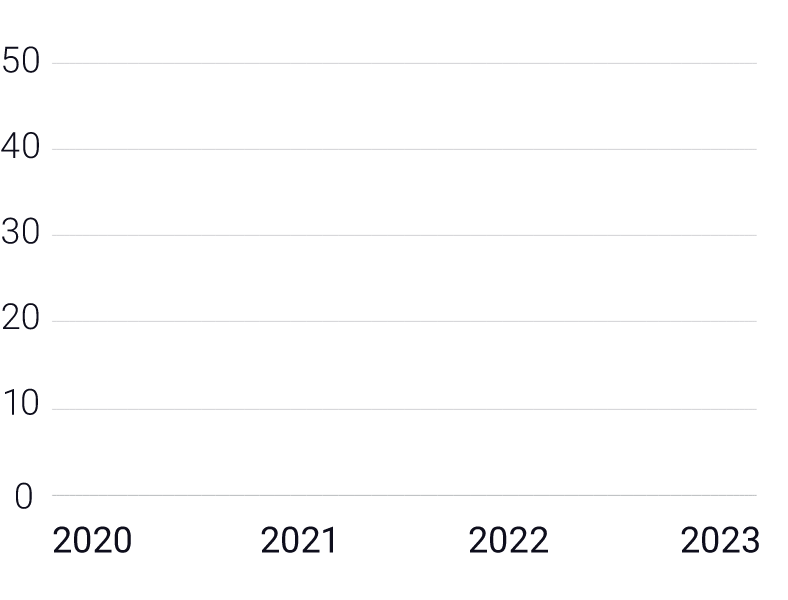

91% Full-Time Independent
8% Part-Time Independent
We believe this is a result of three factors: demand, supply and technology.
 Growing Demand
Growing Demand
Eager to become more agile and flexible in their talent strategies, companies are becoming more careful and focused about adding headcount. As a result, corporations of all sizes are relying more on independent talent to fill both strategic and senior-level positions.
 Expanding Supply
Expanding Supply
Baby boomers are aging out of full-time jobs and want or need to keep working. There is also a greater demand for flexibility and work-life balance. Meanwhile, inflation and underlying economic insecurity are pushing more people to pursue side gigs as ways to augment income.
 Enabling Technology
Enabling Technology
Technology enables the growth of independent workers in both supply and demand. Hiring platforms and collaboration technologies make it easier for companies to find, hire, manage, and work with independents. Talent platforms and the ability to work remotely are making it easier to earn a good living as an independent.
We believe this is a result of three factors: demand, supply and technology.
These factors and shifts make up this year's theme, Stronger Together.
These factors and shifts make up this year's theme, Stronger Together.
The more people who work independently, the more who are empowered to keep doing so. The more they demonstrate the viability of this way of working to others, the more others want to do it. The more others want to do it, the more companies become comfortable engaging independents and reorienting their talent strategies.
Meet the Independents
The independent workforce closely resembles and reflects the American workforce and population at large. A reflection of the U.S. population, demographic trends are changing the shape of the workforce.
Older workers are increasingly aging out of the workforce.
Today, the oldest baby boomers are 77, and the youngest are 59. This cohort, which has been enormously influential on everything from politics to popular culture, is slowly declining and being replaced. We expect this number to continue its rapid decline.
Gen Xers (aged 44-58) are actively moving into independent work.
Generation X accounted for 29% of independent workers in 2023, up from 28% in 2022.
Millennials are moving into the prime of their careers and their influence in both the traditional and independent workforce is on the rise.
In 2023, millennials accounted for 33% of independents.
Gen Z are also on the rise and will grow in future years.
In 2023, Gen Z accounted for 19% of the independent workforce, up sharply from 15% in 2022.
In 2023, the gender breakdown of independents was 51% male and 48% female, a slight shift from 2022, when it was 49% male and 50% female. (The remaining 1% in both years is nonbinary.)
Independents by Cohort
(Seasonally adjusted)
2022
Male: 49% | Female: 50% | Nonbinary: 1%

2023
Male: 51% | Female: 48% | Nonbinary: 1%



Meet the Independents
The independent workforce closely resembles and reflects the American workforce and population at large. A reflection of the U.S. population, demographic trends are changing the shape of the workforce.
Older workers are increasingly aging out of the workforce.
Today, the oldest baby boomers are 77, and the youngest are 59. This cohort, which has been enormously influential on everything from politics to popular culture, is slowly declining and being replaced. We expect this number to continue its rapid decline.
Gen Xers (aged 44-58) are actively moving into independent work.
Generation X accounted for 29% of independent workers in 2023, up from 28% in 2022.
Millennials are moving into the prime of their careers and their influence in both the traditional and independent workforce is on the rise.
In 2023, millennials accounted for 33% of independents.
Gen Z are also on the rise and will grow in future years.
In 2023, Gen Z accounted for 19% of the independent workforce, up sharply from 15% in 2022.
In 2023, the gender breakdown of independents was 51% male and 48% female, a slight shift from 2022, when it was 49% male and 50% female. (The remaining 1% in both years is nonbinary.)
Independents by Cohort
(Seasonally adjusted)
2022
Male: 49% | Female: 50% | Nonbinary: 1%


2023
Male: 51% | Female: 48% | Nonbinary: 1%



Autonomy and Confidence Abound
Autonomy and
Confidence Abound
Attitudes towards independent work are changing, and more workers see it as a viable-and even preferred-alternative to traditional jobs.
Attitudes towards independent work are changing, and more workers see it as a viable-and even preferred-alternative to traditional jobs.
Wired Differently
To a degree, independent workers are simply wired differently. Working independently feeds an increasingly powerful impulse among people who want to be their own boss. In 2023, 80% of independent workers said they always wanted to be their own boss, and some 71% of independent workers say they don't like answering to a boss.
While money is a factor in the choice to work independently, most independents place higher priority on attributes like autonomy, flexibility, and control. For example, 70% of independents said, "doing something I like is important than making the most money", while 70% said, "flexibility is more important than making the most money".
Enduring Challenges
Over the years of this study, the challenges cited by independents have remained consistent, but their prevalence has generally declined. In 2023, the combination of a somewhat weaker macroeconomic climate and higher inflation were weighing on independents.
The challenge cited most frequently is not enough predictable income. In 2023, nearly half of independents (49%) noted such a challenge. That's up notably from 43% in 2022. In a related finding, the next most cited challenge is worrying about their next job or project pipeline (33%). And in 2023, 29% said lack of job security was a challenge, up from 25% in 2022. In a sign that inflation, especially in health care, is front and center, 28% of independents cited concern about benefits as a challenge, up from 24% in 2022.
The Procyclical Effect
In 2023, 45% of independent workers and 41% of traditional workers said more of their friends are working independently. In 2020, by contrast, only 39% of independents and 25% of traditional workers agreed. And in 2015, the first year we asked this question, 31% of independents and 19% of traditional workers agreed that more of their friends were working as independents.
More of My Friends are Working Independently
(% agreeing)
Independent
Workers
Traditional
Workers


Wired Differently
To a degree, independent workers are simply wired differently. Working independently feeds an increasingly powerful impulse among people who want to be their own boss. In 2023, 80% of independent workers said they always wanted to be their own boss, and some 71% of independent workers say they don't like answering to a boss.
While money is a factor in the choice to work independently, most independents place higher priority on attributes like autonomy, flexibility, and control. For example, 70% of independents said, "doing something I like is important than making the most money", while 70% said, "flexibility is more important than making the most money".
Enduring Challenges
Over the years of this study, the challenges cited by independents have remained consistent, but their prevalence has generally declined. In 2023, the combination of a somewhat weaker macroeconomic climate and higher inflation were weighing on independents.
The challenge cited most frequently is not enough predictable income. In 2023, nearly half of independents (49%) noted such a challenge. That's up notably from 43% in 2022. In a related finding, the next most cited challenge is worrying about their next job or project pipeline (33%). And in 2023, 29% said lack of job security was a challenge, up from 25% in 2022. In a sign that inflation, especially in health care, is front and center, 28% of independents cited concern about benefits as a challenge, up from 24% in 2022.
The Procyclical Effect
In 2023, 45% of independent workers and 41% of traditional workers said more of their friends are working independently. In 2020, by contrast, only 39% of independents and 25% of traditional workers agreed. And in 2015, the first year we asked this question, 31% of independents and 19% of traditional workers agreed that more of their friends were working as independents.
More of My Friends are Working Independently
(% agreeing)
Independent
Workers
Traditional
Workers


Demand and Supply
Finding Work
In 2023, 40% of independents who provide services to businesses said they had used an online talent platform to find work in the past 12 months, and 47% said they planned to do so in the next 12 months.
The average user uses 3.2 platforms, and 34% of those using platforms say it is their primary source of work.
Finding Work
In 2023, 40% of independents who provide services to businesses said they had used an online talent platform to find work in the past 12 months, and 47% said they planned to do so in the next 12 months.
The average user uses 3.2 platforms, and 34% of those using platforms say it is their primary source of work.
Independents are Experimenting With AI, (Most) Don't Fear It
In these early days, it is unclear precisely how this powerful new technology will impact the workplace across the board. Our survey results show that independent and traditional workers have roughly the same familiarity with Generative AI and ChatGPT, with 18% of independents saying they are very familiar, 29% somewhat familiar, and 23% a little familiar.
Few independents are concerned about AI and ChatGPT taking their jobs, however.
Independents are Experimenting With AI, (Most) Don't Fear It
In these early days, it is unclear precisely how this powerful new technology will impact the workplace across the board. Our survey results show that independent and traditional workers have roughly the same familiarity with Generative AI and ChatGPT, with 18% of independents saying they are very familiar, 29% somewhat familiar, and 23% a little familiar.
Few independents are concerned about AI and ChatGPT taking their jobs, however.
Conclusion: A Stronger Future
Over the last decade the independent workforce has been building a strong track record, increasing its footprint, and solidifying its foundation. Independent work has emerged as an important source of talent for businesses and a vital source of energy for the U.S. economy.
The spirit, commitment, and talent of this growing legion of workers have a compounding effect. More people than ever are pursuing the path of
independent work and having success at it. They are becoming more integrated with the talent strategies of companies of all shapes and sizes. By proving their worth and reliability daily, they are both encouraging others to pursue the path and further shaping the system to be more conducive to independent work.
In a changed world-one driven by rising costs and macroeconomic shocks, one in which remote work has become commonplace, and one in which more people seek to align their values, purpose, and life goals with their jobs-we expect the share of the workforce working independently to continue to grow.
The spirit, commitment, and talent of this growing legion of workers have a compounding effect. More people than ever are pursuing the path of independent work and having success at it. They are becoming more integrated with the talent strategies of companies of all shapes and sizes. By proving their worth and reliability daily, they are both encouraging others to pursue the path and further shaping the system to be more conducive to independent work.
In a changed world-one driven by rising costs and macroeconomic shocks, one in which remote work has become commonplace, and one in which more people seek to align their values, purpose, and life goals with their jobs-we expect the share of the workforce working independently to continue to grow.
Four broad, long-term trends will drive this growth:
Four broad, long-term trends will drive this growth:
 Workers increasingly want the autonomy, control, and flexibility independent work provides.
Workers increasingly want the autonomy, control, and flexibility independent work provides.

This is especially true for three groups:
(1) skilled professionals, who are in demand due to the strong economy and the growing number of areas experiencing talent shortages;
(2) aging Baby Boomers, who are looking for more flexible, independent encore careers; and
(3) younger workers and especially Gen Zers, many of whom are choosing the "work to live" rather than the "live to work" ethos of prior generations.
 Organizations of all sizes are increasing their use of independent workers to improve business flexibility and agility.
Organizations of all sizes are increasing their use of independent workers to improve business flexibility and agility.

 The number of workers pursuing side gigs will continue to grow.
The number of workers pursuing side gigs will continue to grow.

 Technology empowers independent workers, making becoming independent easier, cheaper, and less risky.
Technology empowers independent workers, making becoming independent easier, cheaper, and less risky.








